Week 7: Linked Lists
1/13
Earn XP
Description and Tags
flashcards made from Week 7: Linked Lists slides
Name | Mastery | Learn | Test | Matching | Spaced |
|---|
No study sessions yet.
14 Terms
Structures
Structures help organize heterogeneous data.
A structure is a collection of variables of possibly different types. The variables are called structure members.
A structure has a single type-name, called the structure tag
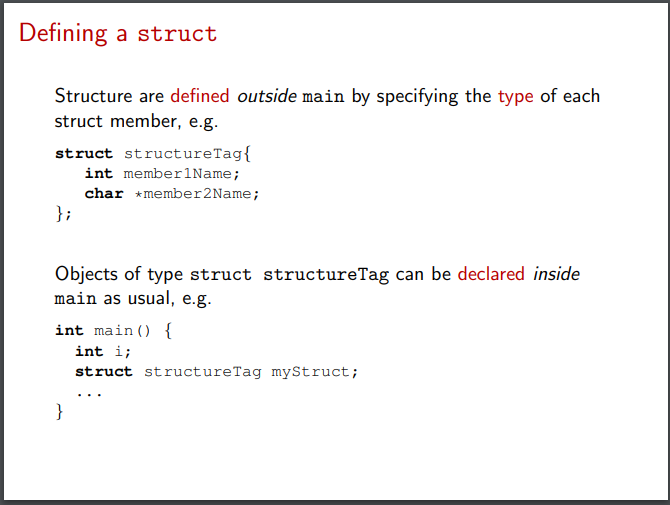
Defining a struct and Accessing the struct members
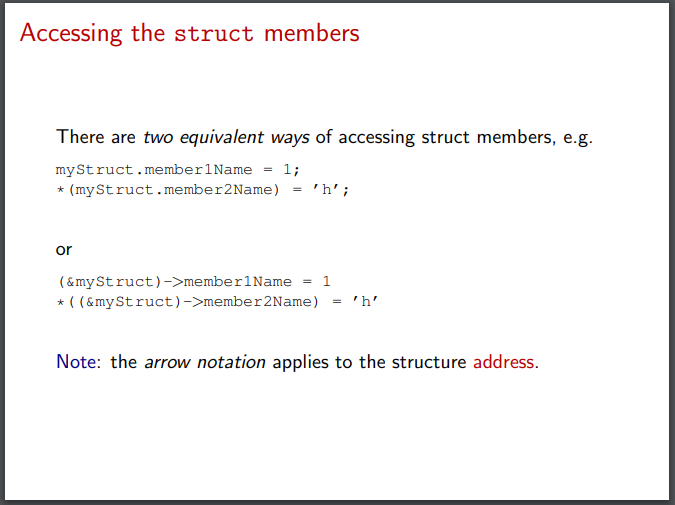
Global operations
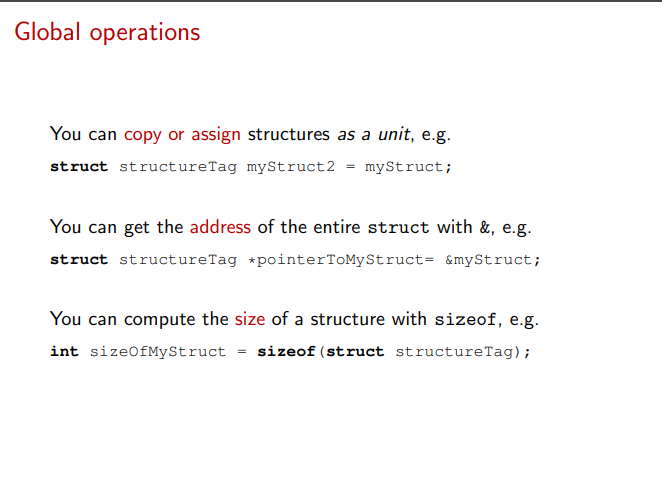
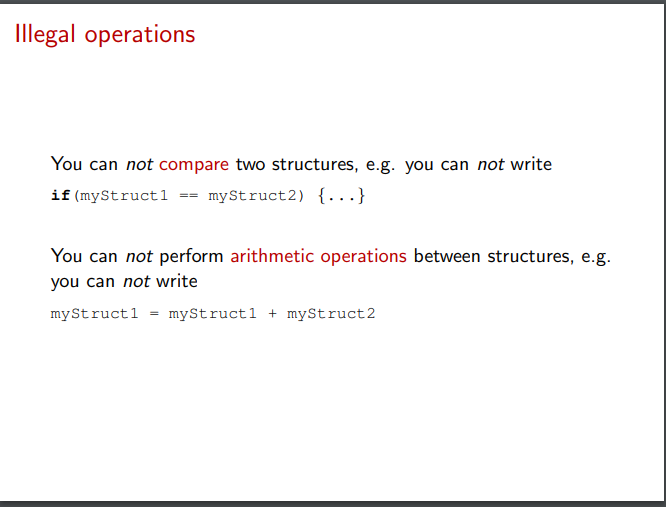
Illegal operations and Why not?

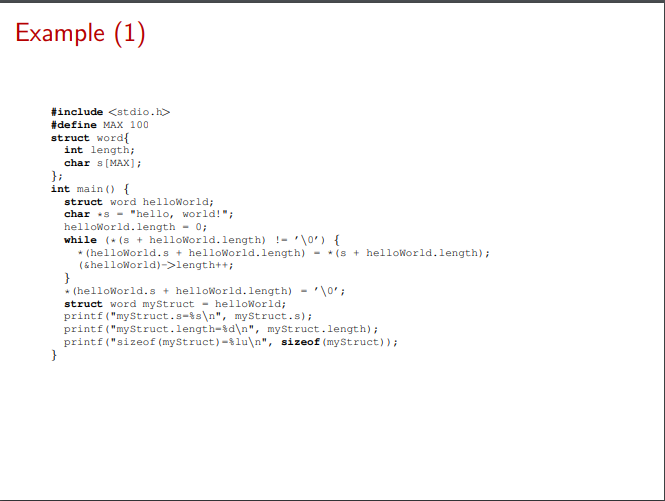
Example (1) and (2)

Size of a struct
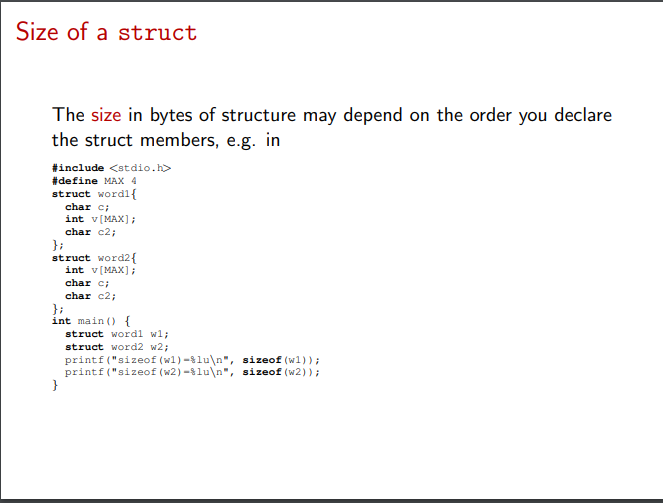
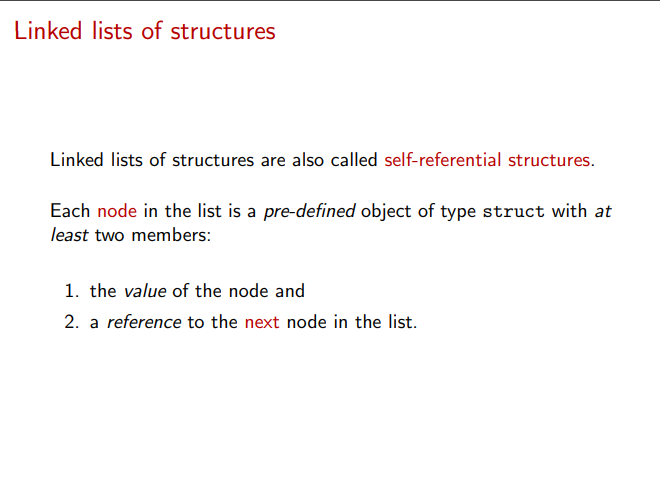
Linked lists of structures and Implementation

Dynamical lists
Linked lists are useful if you do not know the number of nodes in advance.
The idea is to create new nodes when new data points arrive.
Creating a new node requires allocating a new memory slot of size sizeof(struct node).
The total amount of memory needed is unknown at compile time, i.e. you need to allocate nodes dynamically (using malloc).
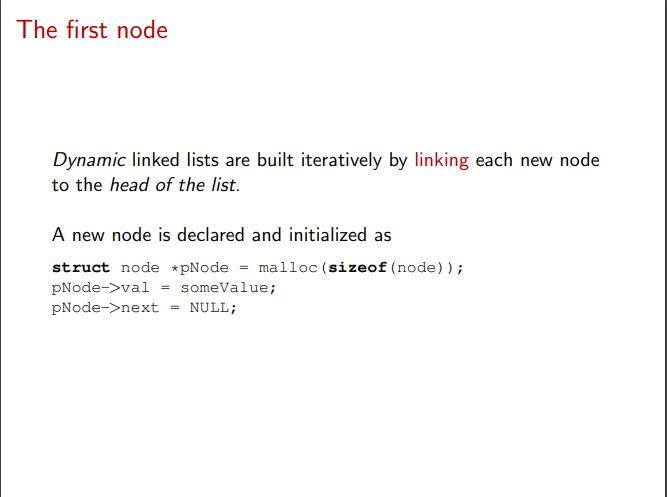
The first node and The head
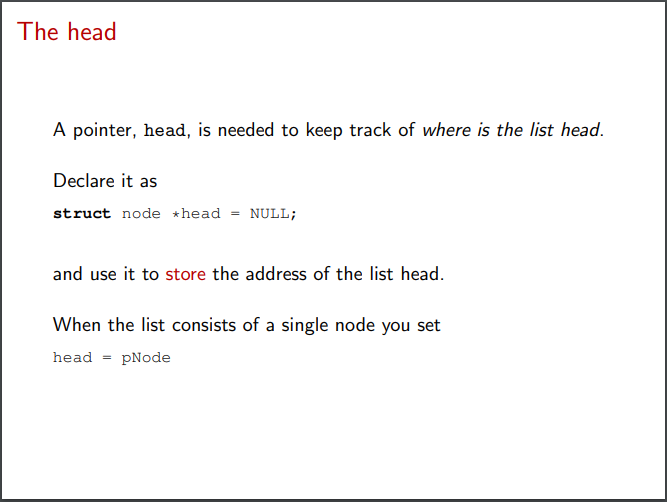
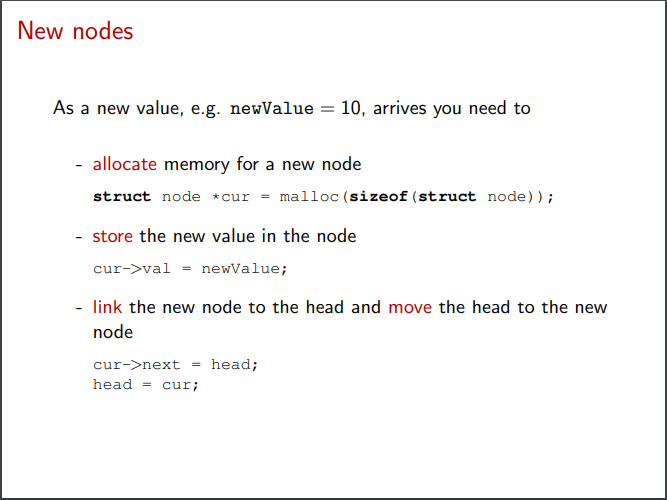
New nodes and Creating the list

Iterations
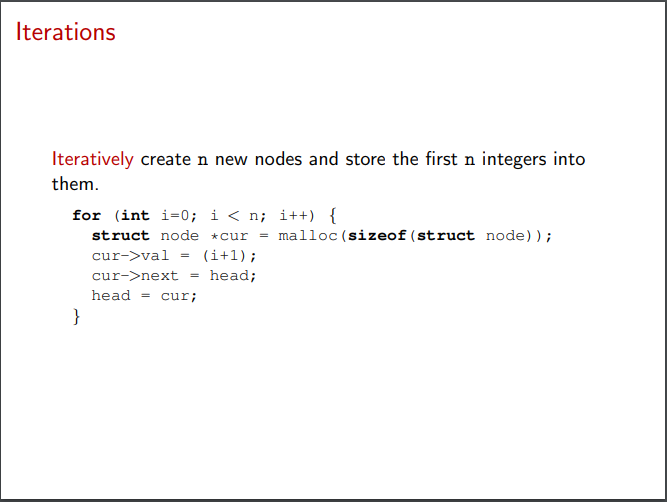
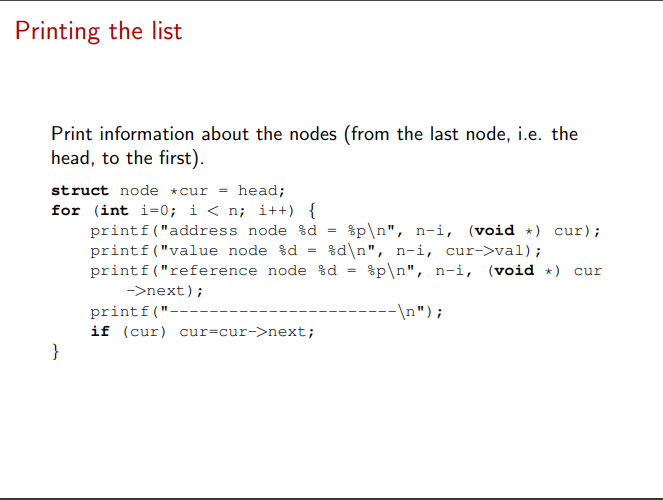
Printing the list and Freeing the list

Other linked lists
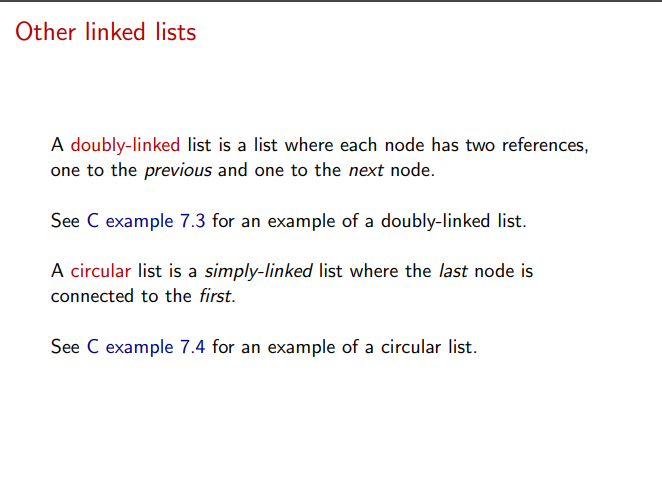
References
